1. Light
1.1. Enables us to see objects that give off light and reflect light
1.2. Travels is straight lines
1.3. Cannot pass through some materials
1.4. Can be completely or partially blocked by an object to form a shadow
1.5. Enables us to see objects that give off light and reflect light
1.6. Can be reflected
1.7. Can ( partially ) pass through some materials
2. Energy
2.1. Heat
2.1.1. Are produced by sources such as the sun, stars, fire, burning fuels and a lighted torch
2.1.2. Keeps us warm
2.1.3. Makes things hot
2.1.4. Can be gained/ lost causing an/a increase/decrease which is measured by dataloggers or thermometers with a heat sensor in degrees Celsius
2.1.5. Travels from hot to cold objects till both objects reach the same temperature
2.1.6. Makes things expand when heated
2.1.7. Makes things contract when cooled
2.1.8. Can cause things to change it's state
2.1.9. Can easily pass through good conductors of heat such as metal
2.1.10. Cannot easily pass through poor conductors of heat such as air, plastics, wood and rubber
3. Cycles
3.1. Always involve
3.1.1. Matter
3.1.1.1. Which has
3.1.1.1.1. Volume
3.1.1.1.2. Mass
3.1.1.2. That occurs in three states
3.1.1.2.1. Solid
3.1.1.2.2. Liquid
3.1.1.2.3. Gas
3.2. Are found in the life cycle
3.2.1. Which
3.2.1.1. Is a pattern that repeats itself in the lives of living things. The young of a living thing goes through a similar life cycle as it's parents, shows the order of the different stages and has a length which is different from one living thing to another
3.2.1.1.1. Some examples include the
4. Credits
4.1. Special thanks
4.1.1. Mc online
4.1.2. Mindmeister
4.1.3. Ministry of education
4.1.4. My pals are here! Science textbook 2nd edition
4.2. Notes
4.2.1. Version 2 coming soon
4.3. Information retrieved from thematic concept map at the end of each textbook
5. Systems
5.1. Are found in
5.1.1. Non living things
5.1.2. Living things
5.1.2.1. Such as
5.1.2.1.1. Human body
5.1.2.1.2. Plants
5.1.2.1.3. Animals
6. Diversity
6.1. Includes many things around us
6.1.1. Which are organized by classification that is putting things into groups
6.1.2. Which are either
6.1.2.1. Living things that
6.1.2.1.1. Need air, water and food, grow, move by themselves,respond to changes around them and die
6.1.2.1.2. That include
6.1.2.2. Non- living things that do not
6.1.2.2.1. And are made out of materials such as wood, metal, rubber, plastics, fabric, ceramics and glass which are chosen to make objects based on their properties such as hardness, strength, flexibility and ability to float or sink in water
7. Interactions
7.1. A magnet
7.1.1. Attracts another magnet when unlike poles face each other
7.1.2. Magnetic materials such as iron and steel that can be magnetized by
7.1.2.1. The stroke method in which the magnetic object is stroked many times in the same direction with a magnet
7.1.2.2. The electrical method in which an electrical wire is coiled many times around the magnetic object, then the ends of a wire are connected to a battery
7.1.3. Does not attract non magnetic materials such as non-metals like plastic and non magnetic metals like copper and gold
7.1.4. Has two poles which are the North-pole and south-pole - where it's attraction is the strongest
7.1.5. Comes to rest in the north-south direction when turned freely
7.1.6. Repels another magnet when like poles face each other
7.1.7. Had many uses such as
7.1.7.1. In electrical appliances like televisions, refrigerators and computers
7.1.7.2. In devices like compasses
7.1.7.3. For separating magnetic materials like iron and steel from non-magnetic materials

